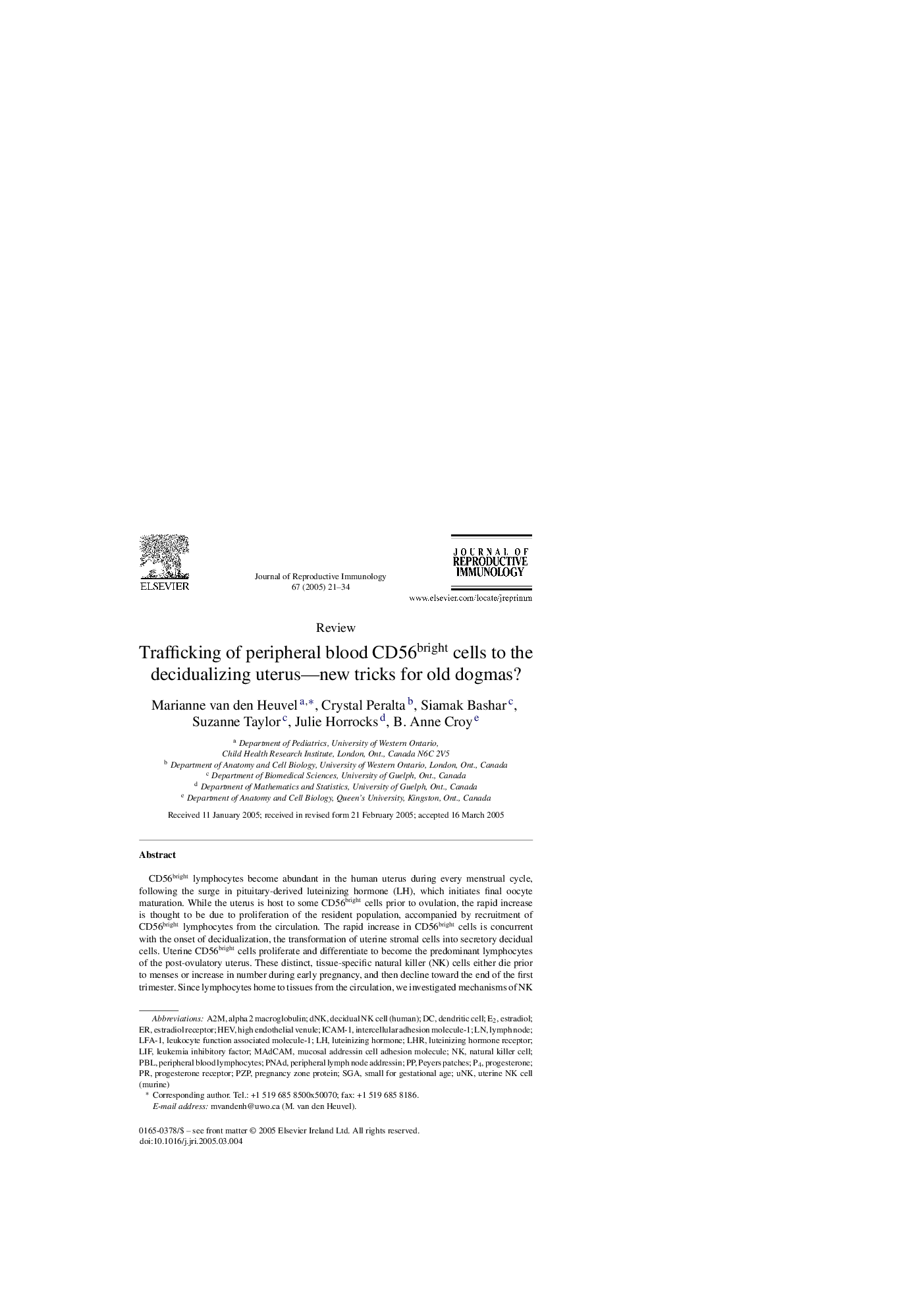| کد مقاله | کد نشریه | سال انتشار | مقاله انگلیسی | نسخه تمام متن |
|---|---|---|---|---|
| 9331497 | 1600726 | 2005 | 14 صفحه PDF | دانلود رایگان |
عنوان انگلیسی مقاله ISI
Trafficking of peripheral blood CD56bright cells to the decidualizing uterus-new tricks for old dogmas?
دانلود مقاله + سفارش ترجمه
دانلود مقاله ISI انگلیسی
رایگان برای ایرانیان
کلمات کلیدی
HEVPNAdICAM-1LIFPZPMAdCAMPBLSGAdNKAlpha 2 macroglobulinuNKLHRLFA-1A2Mperipheral lymph node addressin - آدرس گره لنفاوی محیطیEstradiol - استرادیولSmall for gestational age - حاملگی در سنین پائینDendritic cell - سلول دندریتیکNatural killer cell - سلول قاتل طبیعیleukemia inhibitory factor - عامل مهارکننده لوکمیperipheral blood lymphocytes - لنفوسیت های خون محیطیintercellular adhesion molecule-1 - مولکول چسبندگی بین سلولی -1mucosal addressin cell adhesion molecule - مولکول چسبندگی سلول مخاطی مخاطیluteinizing hormone - هورمون جسم زردhigh endothelial venule - ونول اندوتلیوم بالاPregnancy zone protein - پروتئین منطقه بارداریProgesterone - پروژسترونLymph node - گره های لنفاویEstradiol receptor - گیرنده اترادیولLuteinizing hormone receptor - گیرنده هورمون لوتئینیزاسیونProgesterone receptor - گیرنده پروژسترون
موضوعات مرتبط
علوم زیستی و بیوفناوری
ایمنی شناسی و میکروب شناسی
ایمونولوژی
پیش نمایش صفحه اول مقاله

چکیده انگلیسی
CD56bright lymphocytes become abundant in the human uterus during every menstrual cycle, following the surge in pituitary-derived luteinizing hormone (LH), which initiates final oocyte maturation. While the uterus is host to some CD56bright cells prior to ovulation, the rapid increase is thought to be due to proliferation of the resident population, accompanied by recruitment of CD56bright lymphocytes from the circulation. The rapid increase in CD56bright cells is concurrent with the onset of decidualization, the transformation of uterine stromal cells into secretory decidual cells. Uterine CD56bright cells proliferate and differentiate to become the predominant lymphocytes of the post-ovulatory uterus. These distinct, tissue-specific natural killer (NK) cells either die prior to menses or increase in number during early pregnancy, and then decline toward the end of the first trimester. Since lymphocytes home to tissues from the circulation, we investigated mechanisms of NK cell traffic over the course of natural menstrual cycles by measuring functional interactions between CD56+ cells from blood and endothelial cells using the Stamper-Woodruff assay of lymphocyte adhesion to frozen tissue sections. While a baseline level of adhesion was maintained throughout the cycle, elevated l-selectin-dependent adhesion of peripheral blood CD56bright cells occurred during a peri-ovulatory window. However, there were no significant menstrual cycle-induced changes in the transcription of l-selectin, alpha 4 integrin or LFA-1, or in expression of these proteins by NK cells, suggesting that the enhanced adhesion was due to post-translational modifications of these molecules. Quantitative RT-PCR failed to amplify the message for LH receptor or the alpha or beta forms of progesterone or estrogen receptors from blood NK cell subsets. Thus, we conclude that the actions of LH, E2, and P4 on NK cells that promote interactions with endothelium and potential uterine homing are indirectly mediated through the responsiveness of other cell types.
ناشر
Database: Elsevier - ScienceDirect (ساینس دایرکت)
Journal: Journal of Reproductive Immunology - Volume 67, Issues 1â2, October 2005, Pages 21-34
Journal: Journal of Reproductive Immunology - Volume 67, Issues 1â2, October 2005, Pages 21-34
نویسندگان
Marianne van den Heuvel, Crystal Peralta, Siamak Bashar, Suzanne Taylor, Julie Horrocks, B. Anne Croy,